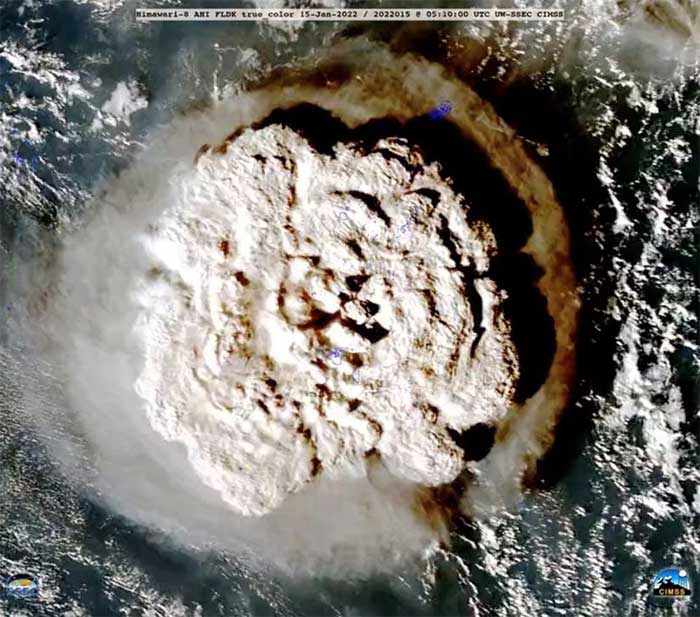The volcanic eruption in Tonga has created a massive water vapor column rising up to 55 kilometers into the atmosphere, effectively “wiping out” 5% of the ozone layer in certain areas within just one week.
Scientists in New Zealand have noted that the Hunga Tonga-Hunga Ha’apai volcanic eruption in the island nation of Tonga in the South Pacific in 2022 rapidly destroyed the ozone layer.

The Hunga Tonga-Hunga Ha’apai volcano during the eruption in January 2022, image captured by a satellite from the Japan Meteorological Agency – (Photo: NOAA/REUTERS)
In a study published in the journal Science on October 20, scientists suggested that the event that occurred on January 15, 2022, when the volcano erupted violently, produced a colossal water vapor column reaching up to 55 kilometers high, “wiping out 5% of the ozone layer in certain areas within just one week. This marks a rapid destruction of the ozone layer.
This was the largest eruption since the eruption in Indonesia in 1883.
Scientist Olaf Morgenstern, who specializes in atmospheric and climate research at the National Institute of Water and Atmospheric Research in New Zealand, stated that this volcanic eruption is the largest eruption in an era when humanity has achieved significant accomplishments in space exploration. The magnitude of this event is based on its explosive power, the height of the ash plume, and particularly the amount of water vapor released into the stratosphere.
To obtain these results, researchers used balloons equipped with measuring instruments, releasing them into the atmosphere to collect information about the weather conditions and the ozone layer affected by the eruption.
This measurement method was implemented near Reunion Island in the Indian Ocean and conducted just five days after the eruption occurred.
The significant increase in water vapor in the stratosphere triggered a series of interactions between other components ejected from the volcano, ultimately breaking down the ozone layer in the Indian Ocean and the Southwest Pacific.
In theory, scientist Laura Revell from the University of Canterbury (New Zealand) explained that large-scale volcanic eruptions can produce ash plumes, along with various gases, solids, and particulates ejected into the stratosphere, approximately 15-50 kilometers above Earth’s surface. This is the area with the highest concentration of ozone – “the shield” that protects Earth.
The depletion of the ozone layer often occurs rapidly after each significant eruption due to interactions involving aerosol or sol-gel gases and chlorine gas. However, Revell noted that a 5% decrease in the ozone layer is a significant level.
Meanwhile, the ozone hole over Antarctica has seen a consistent decrease of about 60% of the total ozone in Earth’s atmosphere from September to November each year.
Olaf Morgenstern remarked that some polar regions of Earth, such as Antarctica, may witness abnormal ozone layer depletion after volcanic materials reach these geographic areas. Additionally, the eruption in 2022 may also affect tropical regions.




















































